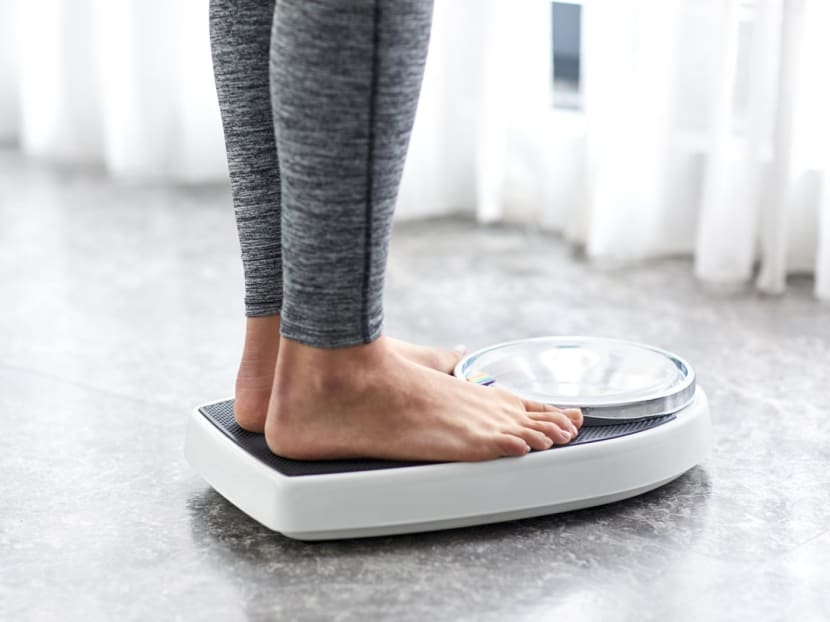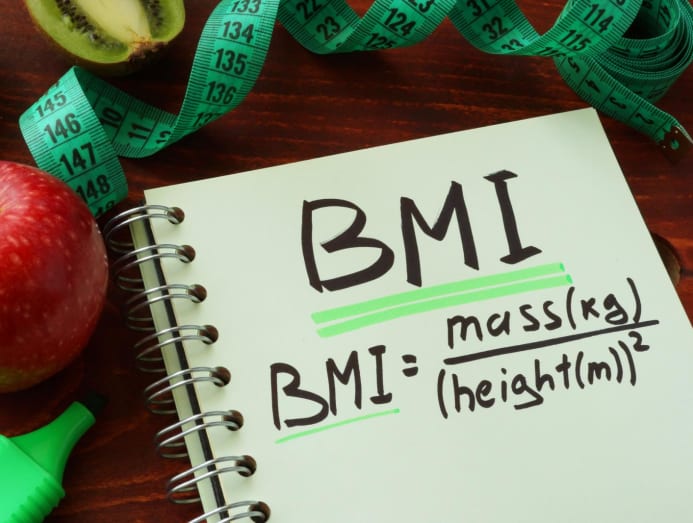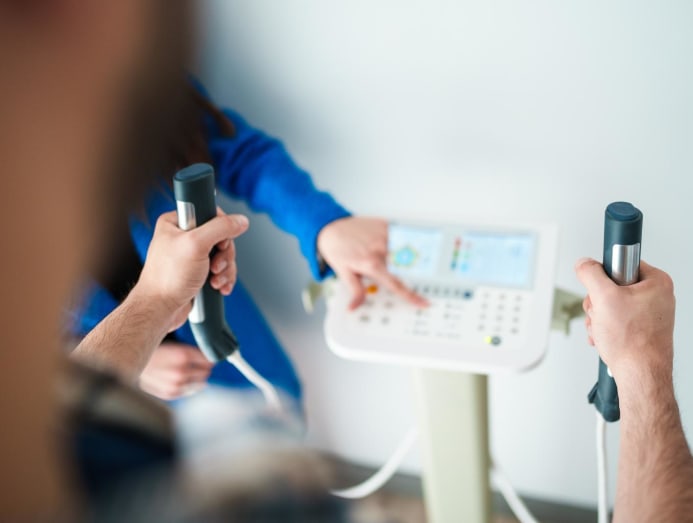More than just a number: Why BMI doesn’t tell the whole story about your health
The BMI is quick and easy but it doesn’t always reflect what’s going on in your body. Enter the BIA, a tool that gives a deeper look at your body’s fat, muscle and water compositions, and why it’s worth paying attention to both.

(Photo: iStock/stockvisual)

This audio is generated by an AI tool.
It is no longer about fitting into your old jeans when your weight can determine your risk of obesity-related diseases such as diabetes, heart disease and certain cancers. And for that matter, accuracy is important.
So, why then is the Body Mass Index or BMI still being used when it is known to have limitations? (A recap: The BMI is calculated by dividing your weight in kilogramme by the square of your height in metre – and hope it falls within the healthy zone of 18.5kg/m2 to 22.9kg/m2.)
The answer is this: “The advantages of the BMI measurement are that it is cheap, quick, reproducible and easy to perform,” said Dr Lee Phong Ching, a senior consultant with Singapore General Hospital’s Department of Endocrinology and the director of its Obesity Centre.
Dr Benjamin Lam, the head of Section, Family and Community Medicine at Khoo Teck Puat Hospital, also opined that the “BMI is a useful starting point”. “It’s easy to calculate and it has been widely used for population-level screening.”
However, detractors of the BMI system claim that it “can underestimate health concerns in older adults and anyone who has lost muscle”. Here’s a look at how that happens and what it means for you at your next health check.

WHAT IS BIOELECTRICAL IMPEDANCE ANALYSIS (BIA) IN THE FIRST PLACE?
You might recall standing barefoot on a platform with metal plates while holding a pair of handles. A few minutes later, your fat mass, muscle mass and water weight are ready, and emailed or texted to you.
Bioelectrical impedance analysis or BIA is a “quick and non-invasive method of estimating body composition such as body fat, muscle mass and water content”, said Dr Lee.
As its name implies, the BIA works by measuring how much impedance or resistance the different tissues such as muscle, fat and water create when a very mild current is passed through your body. “By measuring the resistance to this current, the machine estimates your body composition,” said Dr Lam.
By providing estimates of body fat and muscle mass, said Dr Lee, the BIA can potentially be more accurate than the BMI in diagnosing obesity, especially in athletes and older adults. However, he emphasised that the “BIA only provides an estimation of body composition”.

WHAT ARE THE LIMITATIONS OF BMI AND BIA?
Both have their inherent limitations, said the experts.
“The BMI has often been found to misclassify muscular individuals as ‘overweight’ or ‘obese’,” said Dr Lam. “For example, gym-goers and military personnel have often been assessed with BMI values in the overweight range (BMI 27 to 30) when these individuals are metabolically healthy and weight loss is not required.”
Furthermore, the BMI “does not account for gender or ethnicity differences”, said Louis Yap, a senior dietitian with Mount Elizabeth Novena Hospital. For instance, men tend to naturally have a higher muscle mass and lower body fat than women.
There are also significant variations in obesity prevalence among the ethnic groups in Singapore, according to the Health Promotion Board - Ministry of Health Clinical Practice Guidelines 2016, which the BMI doesn’t take into account. For example, Malays have the highest prevalence at 21 per cent, followed by Indians at 14 per cent and Chinese at about 6 per cent.
Another downside of the BMI is that it can’t measure muscle mass and bone mass, which the BIA can, Yap said. “As such, it may underestimate the health risks in older adults with low muscle mass.”

BIA is not without its drawbacks either. “BIA readings are sensitive to hydration status (dehydration overestimates fat), recent meals and exercise, so the results will differ depending on the time of day that the readings are taken, even on the same day,” said Dr Lee.
And while newer BIA models can estimate visceral fat, they have limitations, said Yap. “They also do not measure subcutaneous fat accurately; the skinfold calliper testing remains a gold standard for that.”
SO WHICH IS MORE RELIABLE?
“I would say the BMI gives a less accurate reading in my practice,” said Yap. But the BMI isn't left in the dust just yet. “The BMI remains a useful, quick screening tool for obesity. It is validated, easily accessible and part of standard health checks,” said Dr Lee.
“The BIA adds nuance as it estimates body fat, muscle and water composition,” he continued. “However, the accuracy of BIA devices varies widely; hence, care is needed when evaluating the BIA results. Each method has their own limitations and we should always interpret these readings in conjunction with other health parameters such as blood pressure, glucose, cholesterol levels and quality of life.”
Dr Lam also advocated for both tools. “Rather than replacing the BMI with BIA, the better approach is to use them together, along with waist circumference, metabolic markers and clinical judgement to assess and predict health,” he said.
“Information from both tools is typically considered and results are interpreted in the context of your overall health profile and goals,” said Dr Lam. “Their respective limitations are acknowledged and factored into the assessment.”
HOW TO MAKE THE MOST OF YOUR HOME BIA MACHINE READINGS
The following data can offer helpful insights but they should be interpreted with care, said Dr Benjamin Lam, the head of Section, Family and Community Medicine at Khoo Teck Puat Hospital:
- Weight: What you’re most familiar with. It is used to calculate your BMI.
- Body fat percentage: The healthy range varies by sex and age, typically about 15 per cent to 20 per cent for men, and about 20 per cent to 25 per cent for women. High levels, especially around the waist, increase your risk of chronic diseases.
- Muscle mass: It refers to the skeletal muscles. Higher muscle mass supports metabolism and mobility, which is especially important as you age.
- Bone mass: This is usually stable; large fluctuations can reflect measurement variability, not true changes.
- Hydration: Measures total body water. It fluctuates with fluid intake, meals, exercise, and time of the day. Watch trends, not isolated readings.
- Basal metabolic rate (BMR): The estimated number of calories your body burns at rest. It is calculated using your weight, height, age, gender, and sometimes, body composition.
- Active metabolic rate (AMR): This is your estimated total daily calorie expenditure. It is calculated by multiplying BMR with a Physical Activity Level (PAL) factor based on how active you are. Home BIA machines typically ask for your activity level and use it to estimate AMR. It’s helpful for general calorie planning but it’s still just an estimate.
- Visceral vs subcutaneous fat: Most home devices don’t reliably distinguish the two. Some clinical-grade machines estimate visceral fat, which surrounds internal organs and is more closely linked to metabolic disease than the subcutaneous fat under the skin.
ARE HOME BIA MACHINES LESS ACCURATE?
Not all BIA machines are the same, said Dr Lee. “Consumer-grade, foot‑to‑foot scales are generally less accurate than professional-grade BIA machines.” He explained that the “accuracy varies widely depending on the device specifications and modelling algorithms”.
The number of electrodes or sensors used plays a part as well. “Professional-grade BIA machines use tetrapolar or eight-point devices (involving hand and feet electrodes), and multiple currents at varying frequencies to provide segmental body composition and better accuracy,” said Dr Lee.
“Meanwhile, home BIA machines are typically single-frequency, foot‑to‑foot only. They generally rely on broad algorithms and empirical estimations, and hence, are less reliable.”

SO, WHAT IS THE TAKEAWAY?
If there is an opportunity to perform a BIA, take it, said Yap. “It does give a more in-depth breakdown of what your body comprises of. For individuals who lead a less active lifestyle, a quick calculation of their BMI would help classify them in the respective category to determine their at-risk disease status.”
Both Dr Lee and Dr Lam recommended using the BMI and BIA for a more complete picture of your health. “The BMI is useful for screening. The BIA provides a more detailed look at body composition, helping guide individualised care and long-term monitoring," said Dr Lam.
And "we should always interpret these readings in conjunction with other health parameters such as blood pressure, glucose, cholesterol levels and quality of life," added Dr Lee.
At the end of the day, remember that “no single number defines your health”, said Dr Lam. “What matters most is your lifestyle, metabolic health, functional ability and overall well-being."






